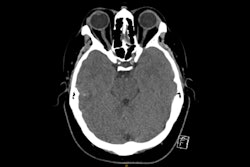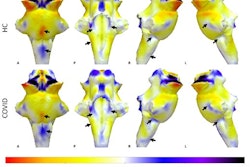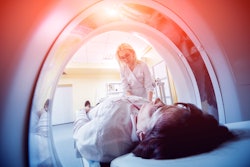Clinically significant extracardiac findings are common on CT and MRI and are especially associated with exam indication and patient age, researchers from the European Society of Cardiovascular Radiology (ESCR) have reported.
Detecting and interpreting these findings is crucial for patient care, wrote a team led by Dr. Lukas Moser of University Hospital Zurich in Switzerland. The study results were published on 10 October in Radiology: Cardiothoracic Imaging.
"Detecting and interpreting extracardiac findings in cardiovascular CT and MRI remains a challenge … [but] timely evaluation of extracardiac findings can be important in the presence of life-threatening conditions," the investigators noted.
Cross-sectional imaging such as CT and MRI is a valuable tool for assessing cardiac disease, Moser and colleagues explained, and the volume of cardiac exams continues to increase. The field-of-view for these types of exams includes not just the heart but also adjacent structures such as the lung and abdomen, which can identify incidental extracardiac conditions, according to the team; some of these findings can be benign, but others -- such as pulmonary nodules or effusions, structural lung disease, pulmonary embolism, pleural lesions, diffuse liver disease, hernia, or suspicious abdominal lesions -- may require follow-up.
The researchers explored the prevalence extracardiac clinically significant findings on CT and MRI by conducting an analysis of data from the European Society of Cardiovascular Radiology MR/CT registry. Their assessment included information from 208,506 cardiac CT exams and 228,462 cardiac MRI exams entered into the registry between January 2011 and November 2023. They defined "clinically relevant extracardiac findings" as those that required follow-up exams or which influenced patient management and evaluated any associations between patient characteristics (including age) with the prevalence of extracardiac findings using incidence rate ratios (IRRs).
The authors found the following:
- The prevalence of clinically relevant extracardiac findings was 3.3% on the cardiac CT exams and 1.5% on the cardiac MR scans.
- Extracardiac findings were more common on CT exams performed for transcatheter aortic valve replacement (IRR, 2.07, with 1 as reference) and structural heart disease (IRR, 1.44) compared with CT imaging undertaken for coronary artery disease.
- Extracardiac findings were more common on MR imaging performed for myocarditis (IRR, 1.36) and structural heart disease (IRR, 1.16) than for coronary artery disease.
- Older patient age was significantly associated with higher incidence of extracardiac findings, with an IRR for both CT and MRI examinations of 1.02.
The study results underscore the important role radiologists play in interpreting CT and MRI exams, according to the authors.
"[Our] findings support the role of radiologists in interpretation of cardiac CT and MR images, as they represent imaging experts not only for the heart and vessels but also for other body regions that are simultaneously depicted at cross-sectional imaging examinations," they concluded. "Future studies of such large-scale registries should evaluate the prognostic implications of extracardiac findings in cardiovascular imaging."
The complete study can be found here.




















